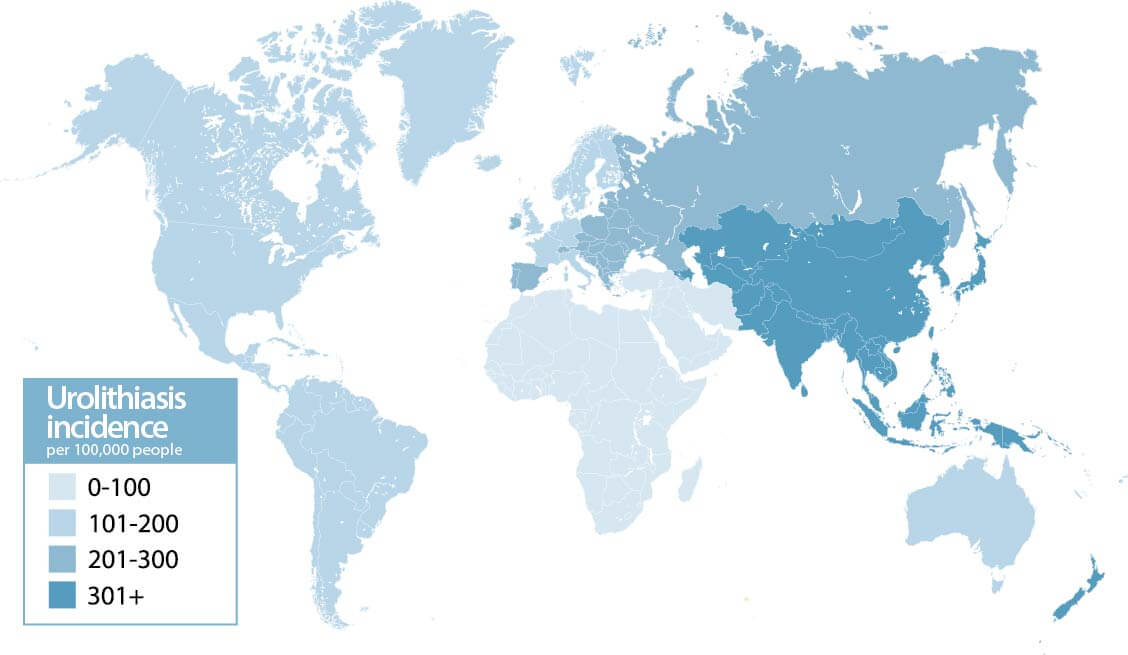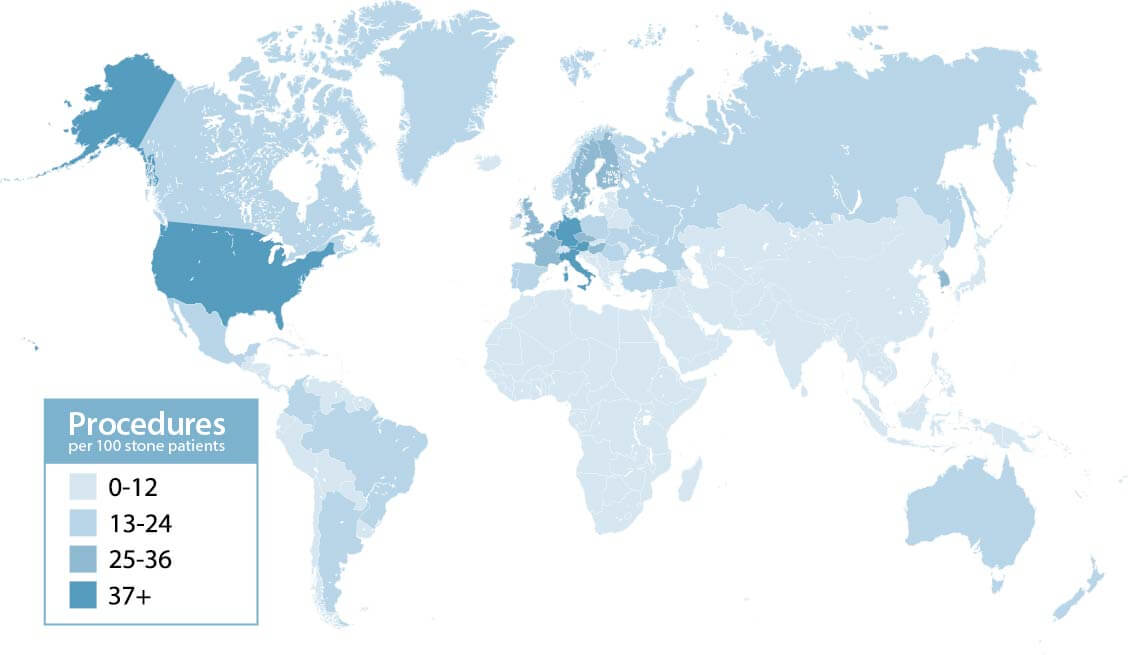March 10, 2016 – Today is World Kidney Day, and we’re joining with healthcare professionals around the globe to raise awareness for kidney disease. The kidney stone statistics are staggering. In many areas, the increasing incidence and prevalence of kidney stones is a growing concern. Worldwide, diet and climate are two factors influencing these trends.

Market information compiled by Cook Medical (February, 2016)
Diet & obesity
Several of the most common risk factors for stone disease are dietary in nature. Obesity is perhaps the most commonly associated risk factor and is a growing concern; the obesity rate in the United States rose from 14.6% in early 1970s to 35.2% in the mid-2000s. This increase, often associated with an increased consumption of fast foods and foods containing high fructose corn syrup, has been directly correlated to an increased incidence of kidney stones. Other dietary habits linked to stone formation include high consumption of starchy foods, animal proteins, and oxalates, as well as low consumption of fluid and calcium.1
Climate
Numerous studies identify a link between environmental temperature and kidney stone rates.
“A higher prevalence of stone disease is typically found in hot, arid, or dry climates such as the mountains, desert, or tropical areas, as geographic variability tends to reflect environmental factors.”2
As temperatures rise around the globe, this connection could have a significant impact on the number of kidney stone cases reported.
Treatment
The more developed countries and regions are often equipped to treat this growing number of cases. However, the procedures to treat stone disease may not be as readily available in certain parts of the world where kidney stones are prevalent.

Market information compiled by Cook Medical (February, 2016)
Take a moment to help us raise awareness by sharing this information with your peers, with your patients, and through social media. It may make all the difference in the world.
- Romero V, Akpinar H, Assimos DG. Kidney stones: a global picture of prevalence, incidence, and associated risk factors. Rev Urol. 2010;12(2-3):e86-e96.
- Ordon M, Urbach D, Mamdani M, et al. The surgical management of kidney stone disease: a population based time series analysis [master’s thesis]. Institute of Health Policy, Management and Evaluation, University of Toronto; 2013.